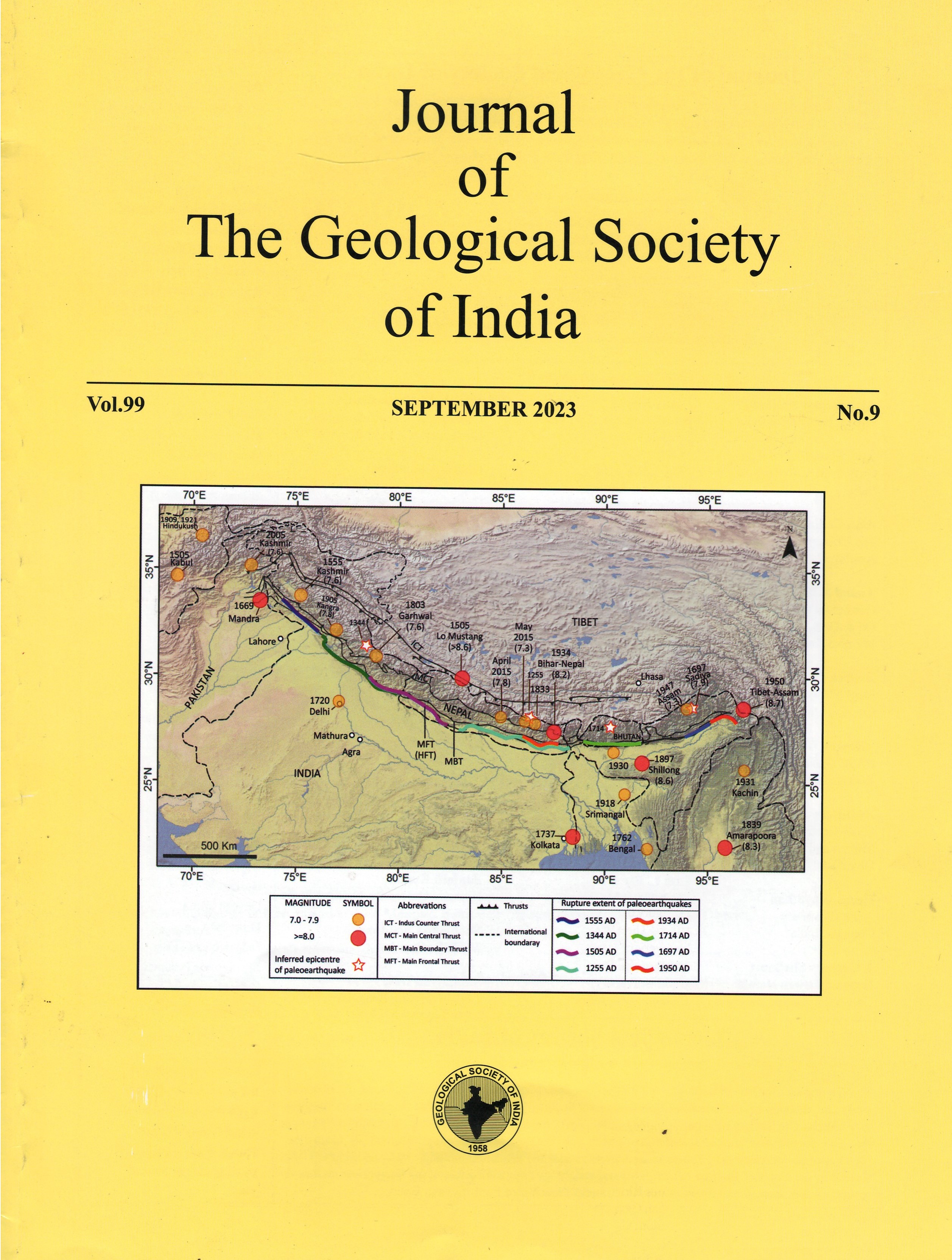Evaluation of Maturity (Late Diagenesis) in Source Rocks of Jaisalmer Basin in Rajasthan, India Using 57Fe Mossbauer Spectroscopy
DOI:
https://doi.org/10.1007/s12594-023-2458-yKeywords:
No KeywordsAbstract
The potential of a source rock for hydrocarbon generation depends on several factors such as the amount, type and maturity level of the organic matter present in it as well as the redox conditions in which the sediments containing the source rocks were deposited. Organic-rich sediments deposited in reducing environment have better prospects for a good quality source rock as compared to those deposited in oxidizing environments. The information about the oxidizing/reducing environment at the time of deposition can be obtained from the presence or absence of certain iron-bearing minerals in sediments. The presence of oxide minerals goethite (α-FeOOH) and/or hematite (α-Fe2O3) indicates that sediments were deposited in an oxidizing environment. Therefore the study of iron-bearing minerals in sediments can be used to understand the qualities of the source rocks.
Sedimentary samples were collected from different depths of three wells BT-3, DND-1 and LNR-1 located in different structures of the Jaisalmer basin were investigated to understand the chemical state of iron by using Mössbauer spectroscopy. In most of the samples, iron was found mainly in the form of pyrite (FeS2), siderite (Fe, Mg) CO3, 2:1 layer silicates in high spin Fe3+ and high spin Fe2+ state and (Ca, Fe, Mg) carbonates. In the samples from Lathi and Shumarwali formations that belong to the lower Jurassic and Triassic sequences, α-Fe2O3 (hematite) was indeed observed. It was present in a narrow sedimentary depth interval in the wells BT-3 and DND-1 and in a much broader thickness in well LNR-1. The other sedimentary sequences younger than the Lower Jurassic sediments have not shown the presence of any oxide mineral.
The present study indicates that oxidizing environment was present in the entire basin in the Lower Jurassic era at least for some duration. However, the degree of oxidation was not uniform as evident from the distribution pattern of iron oxide mineral (α- Fe2O3). Mössbauer studies of source rocks can also be used as a fingerprint to get information about the thermal history (Palaeo- temperature) of sedimentary sequence which is crucial in hydrocarbon prospecting.

 Sahi Ram
Sahi Ram






